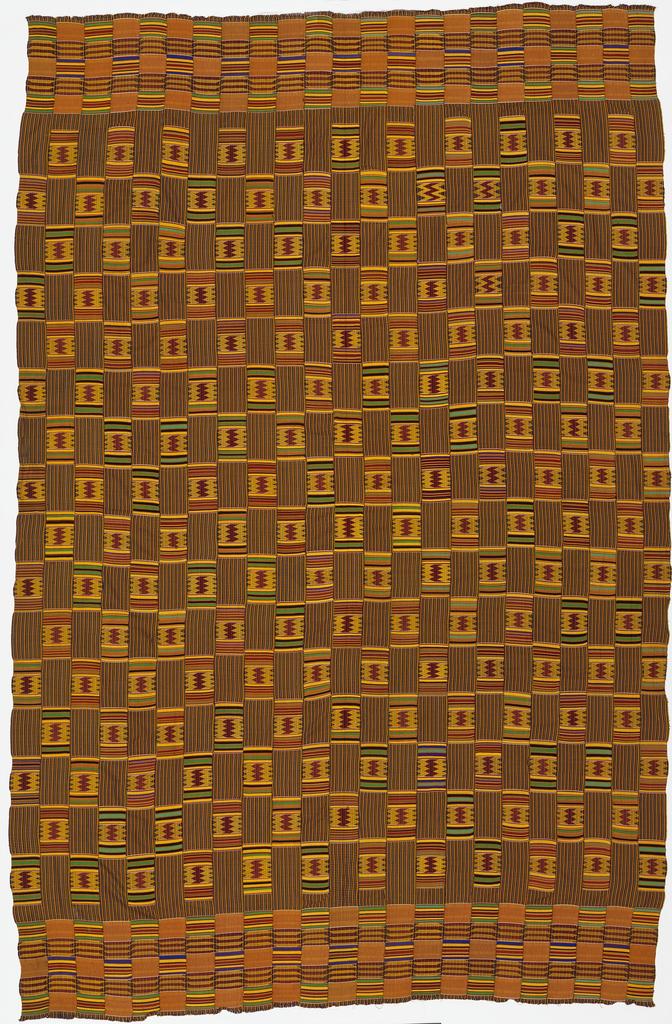h1 {
text-align: center;
}
h2 {
font-size: 1.5rem;
margin-top: 1rem;
margin-bottom: 1rem;
}
h3 {
font-size: 1.25rem;
margin-top: 1rem;
margin-bottom: 1rem;
}
ul {
list-style-type: none;
padding: 0;
}
li {
margin-bottom: 0.5rem;
}
.table {
width: 100%;
border-collapse: collapse;
}
th, td {
border: 1px solid #ddd;
padding: 0.5rem;
}
th {
text-align: left;
}
Unveiling the Rich Heritage and Vibrant Hues of Kente Cloth: A Timeless African Masterpiece
Kente cloth, a majestic textile from the heart of west Africa, is a testament to the extraordinary artistry and cultural heritage of the Ghanaian people. Its intricate patterns, vibrant colors, and deep-rooted symbolism have captivated the world, making it an enduring icon of African creativity.
A Historical Tapestry
Table of Contents
The genesis of Kente weaving can be traced back centuries to the Ashanti and Ewe communities of Ghana. Originally crafted as loincloths for royalty and high-ranking members of society, Kente gained widespread recognition for its exceptional beauty and cultural significance.
Kente’s vibrant colors are carefully chosen to represent different aspects of life. Gold, for example, symbolizes purity and wealth, while red signifies passion and bravery. Black represents power and spirituality, and green embodies fertility and prosperity.
Weaving the Patterned Fabric
creating Kente cloth is a labor-intensive process that involves multiple artisans and specialized techniques. The fabric is woven on a horizontal loom using silk or cotton threads. The intricate patterns are created by combining different colored threads and skillfully interlocking them.
Each pattern has a distinct name and meaning, often reflecting proverbs, historical events, or religious beliefs. For instance, the “Sankofa” pattern depicts a bird looking back, symbolizing the importance of learning from the past to build a better future.
Cultural Significance
In Ghana, Kente cloth is more than just a piece of fabric—it’s an integral part of the nation’s cultural identity. It is traditionally worn during important occasions such as weddings, festivals, and religious ceremonies.
The Ashanti people beleive that Kente possesses spiritual power and that wearing it can bring blessings and protection. It is indeed also used as a form of storytelling, with each pattern conveying a specific message or history.
Benefits of Kente Cloth
- Preserving cultural heritage
- Promoting economic growth through tourism
- Inspiring fashion and design
- Empowering weavers and supporting local communities
- Creating a sense of cultural pride and identity
Practical Tips for Wearing Kente Cloth
If you’re interested in incorporating Kente cloth into your wardrobe,here are some tips to help you:
- choose pieces that complement your body type and style.
- Pair Kente with neutral colors to create a elegant look.
- Accessorize with jewelry or scarves that enhance the fabric’s vibrancy.
- Hand-wash Kente cloth gently and avoid using bleach.
- Iron on a low heat setting and avoid using steam.
Case Studies: Kente’s Impact on Fashion
Kente cloth has had a profound impact on the fashion industry, inspiring designers and creatives worldwide. Here are a few notable case studies:
- Ghanaian designer Ozwald Boateng incorporated Kente into his haute couture collections, showcasing its versatility and glamour.
- American designer Dapper Dan created streetwear pieces featuring Kente patterns,popularizing the fabric among hip-hop and R&B artists.
- Fashion designer Kara Walker used Kente as inspiration for her collections, highlighting its cultural and aesthetic significance.
First-Hand Experience
“Wearing Kente cloth makes me feel connected to my Ghanaian heritage,” said Ama Asantewaa,a textile enthusiast from Accra.
“The colors and patterns are so vibrant and meaningful. It’s truly a piece of art that I’m proud to wear.”
Conclusion
Kente cloth is a testament to the enduring legacy of African artistry and the vibrant cultural heritage of Ghana. Its intricate patterns, rich colors, and deep-rooted symbolism have captivated the world, making it a timeless masterpiece.
Today, Kente continues to inspire fashion designers, preserve cultural traditions, and empower communities. It is a living embodiment of the resilience and creativity of the African spirit.
| Pattern Name | meaning |
|---|---|
| Sankofa | Looking back to learn from the past |
| Adinkra | Symbols representing proverbs and life lessons |
| Kyenkyen | Strength and swiftness of an eagle |
| Fontomfrom | Democracy and unity |
| nyansapo | Wisdom and knowledge |

